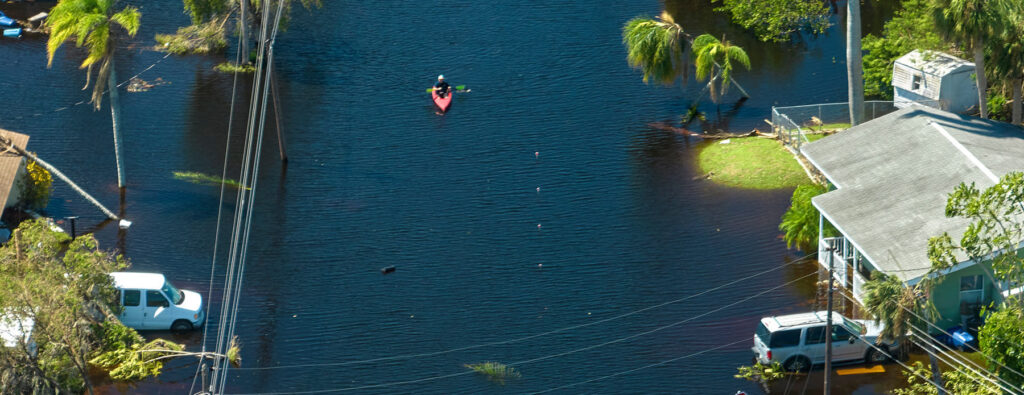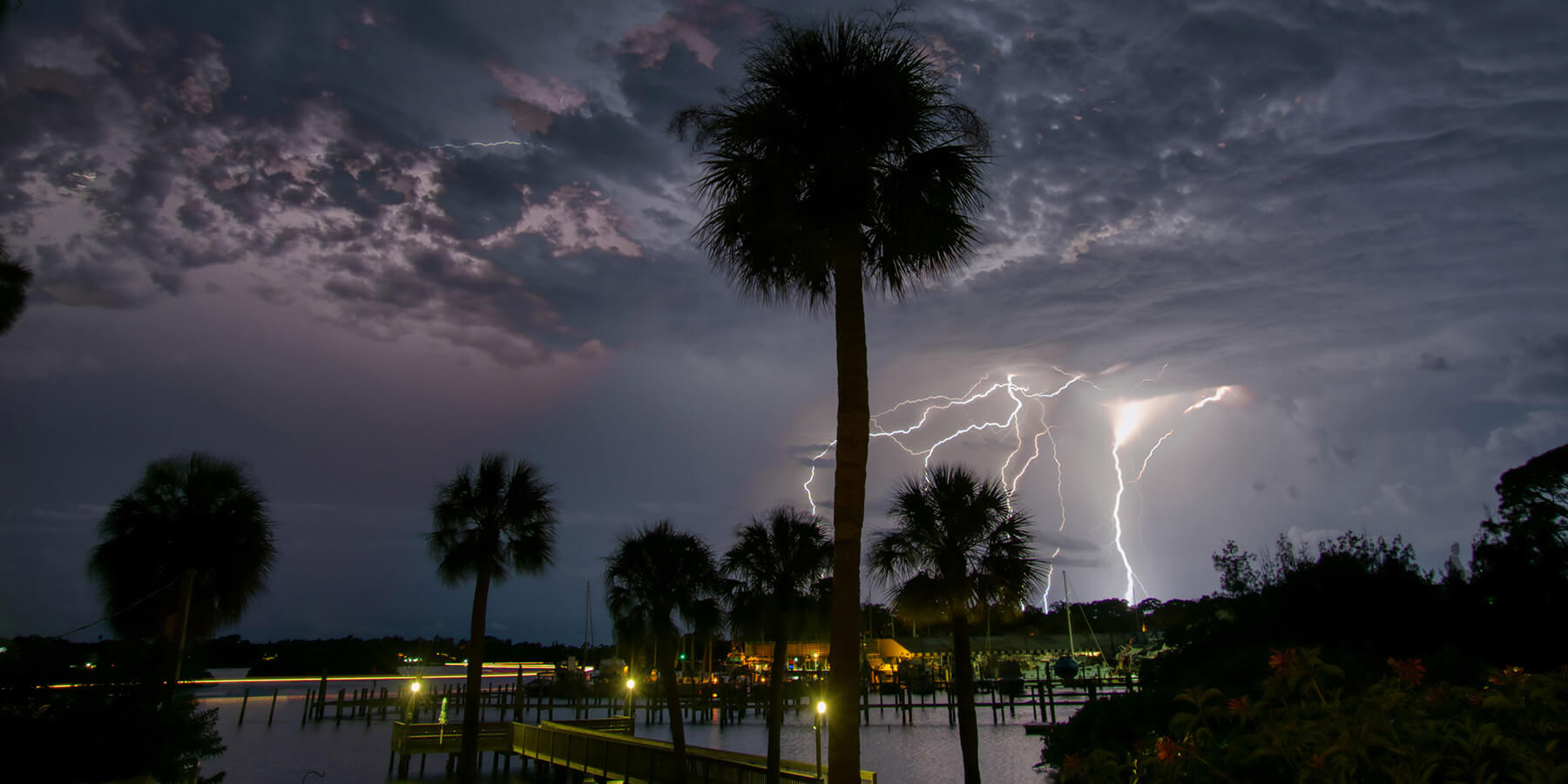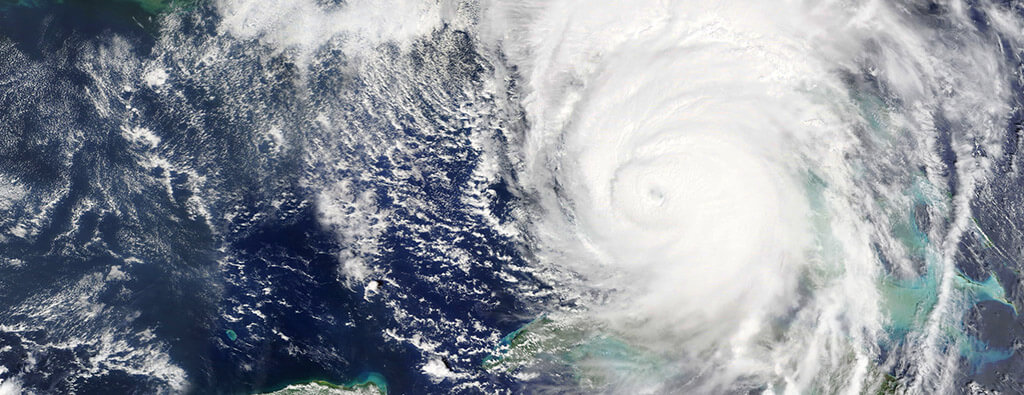Hurricane Idalia was a powerful and historic storm that caused widespread destruction as it tore through the Caribbean, Gulf Coast, and southeastern United States in late August 2023.
From its rapid intensification to its landfall in Florida’s Big Bend as a Category 3 hurricane, Idalia left a trail of significant storm surge, wind damage, and flooding.
What Made Hurricane Idalia Unique?
Hurricane Idalia struck an area of the Florida coastline known as the Big Bend, which had never seen a major hurricane before.
The storm’s rapid intensification, fueled by extremely warm sea surface temperatures, and its timing of making landfall during low tide, made it a highly destructive tropical storm.
The National Weather Service in Tallahassee called Idalia “an unprecedented event” due to the absence of historical records showing a major hurricane passing through this region.
The storm also rivaled the infamous 1993 “Storm of the Century,” with residents noting water levels that matched or surpassed that devastating event in some areas.
The Formation of Hurricane Idalia
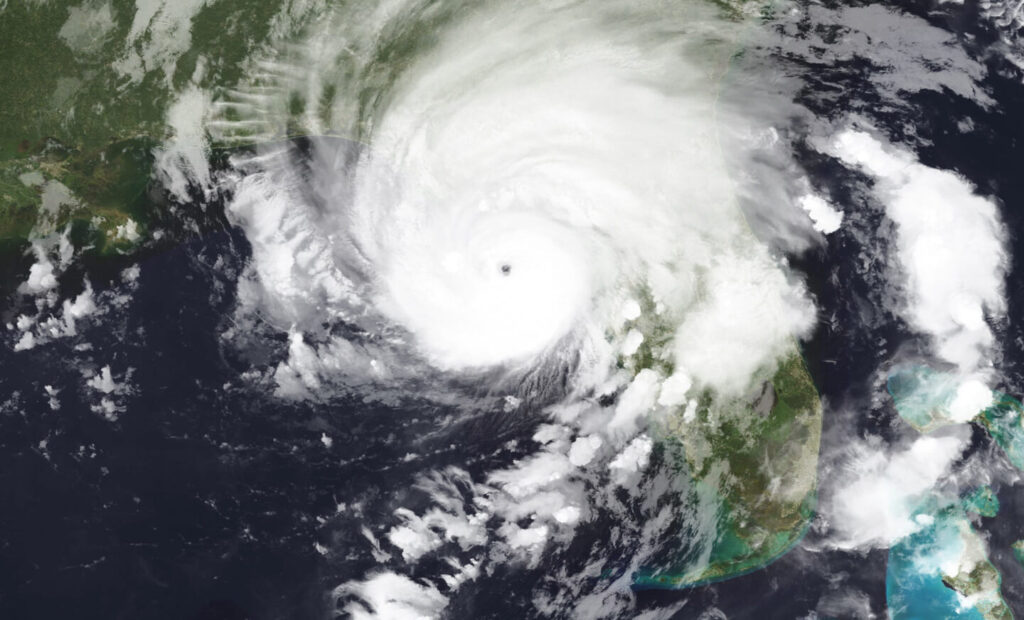
Early Stages
The initial formation of Idalia started around August 23, 2023, when an area of disturbed weather formed near Central America and the eastern Pacific.
Over the following days, this weather system drifted into the northwestern Caribbean Sea. By August 26, Idalia had developed into a tropical depression, and by August 27, it strengthened into a tropical storm.
Rapid Intensification
From August 28 onward, Hurricane Idalia began to rapidly intensify. It crossed over the western tip of Cuba as a tropical storm and entered the warm southern Gulf, where conditions were ideal for its strengthening.
By early August 29, Idalia had become a hurricane, later intensifying into a Category 3 major hurricane.
Just before landfall on August 30, Idalia briefly reached Category 4 strength with peak sustained winds of 130 mph before undergoing an eyewall replacement cycle that marginally weakened it to a high-end Category 3 storm at 125 mph.
Where Did Hurricane Idalia Make Landfall?
Hurricane Idalia made landfall near Keaton Beach, Florida, at approximately 7:45 a.m. ET on August 30, 2023.
Keaton Beach lies in Florida’s sparsely populated Big Bend region, known for its natural habitats and remote communities.
The storm’s impacts extended beyond Florida, affecting parts of Georgia, the Carolinas, and even as far as Bermuda as it moved northeastward and eventually back into the Atlantic Ocean by September 1.
The Immediate Impacts of Hurricane Idalia
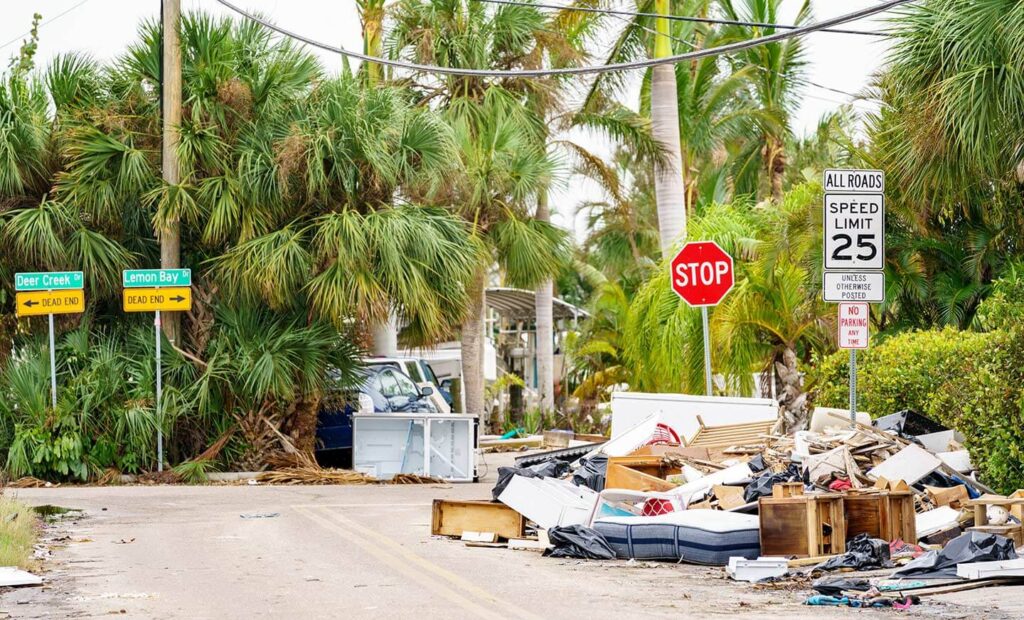
Storm Surge
The most devastating impact of Hurricane Idalia was its powerful storm surge, which reached heights of 7 to 12 feet in coastal areas of Taylor, Dixie, and Levy Counties.
Residents in affected areas reported severe inundation, with water levels rivaling or exceeding those of the 1993 Storm of the Century.
The situation could have been even worse if Idalia had made landfall during high tide.
Wind Damage
Strong winds caused extensive damage to homes, infrastructure, and forests, particularly across southeastern portions of the Florida Big Bend.
Wind gusts of 80 to 90 mph were common, and some areas experienced near-total destruction of tree lines and timber industries.
Power outages affected up to 100% of residents in counties like Taylor and Madison, with significant wind impacts felt as far inland as Georgia.
Flooding
Though Hurricane Idalia’s rapid forward motion reduced its overall rainfall impacts, areas in the Florida Big Bend and southern Georgia experienced flash flooding.
Valdosta, Georgia, saw water rescues due to heavy rain, which exacerbated tree damage in already saturated soil.
Coastal areas in the Carolinas also faced flooding from storm surge, with Charleston, South Carolina, experiencing one of its highest recorded tides in history at 9.2 feet.
Tornadoes
One tornado was reported in South Carolina, flipping a vehicle in Goose Creek and causing minor injuries. Brief spin-ups may also have occurred in other states along Idalia’s path.
The Aftermath and Recovery Efforts
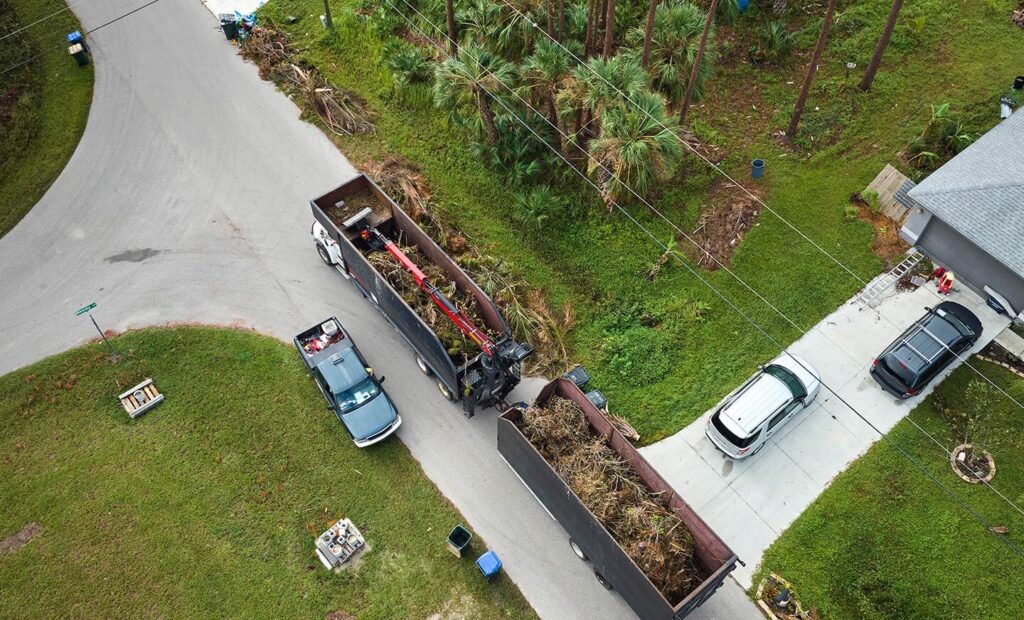
Florida’s rural Big Bend region faced daunting recovery challenges. Near-total power outages, extensive debris, and infrastructure damage complicated response efforts.
Tidal Basin’s Role in Hurricane Idalia Recovery
Tidal Basin played a critical role in spearheading recovery and relief efforts. Key highlights included:
- Emergency Operations Center (EOC) Support: Provided continuous operational support in the State EOC. Subject matter experts were stationed in the EOC and served as advisors to the State government and Florida Division of Emergency Management (FDEM) leadership.
- Debris Management: Oversaw the removal of over 700,000 cubic yards of disaster-generated debris, including 24,000 hazardous trees, and 28,000 dangerous tree limbs. This helped restore electrical grids managed by the Suwannee Valley Electric Cooperative (SVEC).
- Sheltering Programs: Collaborating with FDEM, Tidal Basin deployed disaster recovery teams across nine centers and launched a custom online portal for shelter assistance applications. Utilizing our proprietary Phoenix OneCase (P1C) platform, we provided real-time data management and streamlined application intake, processing over 300 applications. The P1C platform streamlined our team’s communication and coordination, making it easier and more efficient to place survivors in hotels and temporary trailers.
- Website Development: With time playing a major factor, our team quickly designed, developed, and launched a public website in less than two weeks. The site included disaster assistance resources and a link to the application portal where survivors could apply for assistance. The fast turnaround time enabled our team to begin assisting applicants more quickly and get them the support they needed on their road to recovery.
- Communications Logistics: Procured and mobilized Starlink satellite communications systems to restore connectivity in remote areas. Provided staff support, distribution, inventory, setup, installation, monitoring, troubleshooting, technical support, program management, activating/deactivating devices, and coordination of device requests.
Tidal Basin continues to provide innovative disaster management solutions, working closely with state and federal agencies to address immediate needs and long-term recovery solutions.
Frequently Asked Questions About Hurricane Idalia
When was Hurricane Idalia?
Hurricane Idalia formed as a tropical depression on August 26, 2023, intensified into a major hurricane by August 29, and made landfall in Florida on August 30.
What category was Hurricane Idalia?
Idalia made landfall as a high-end Category 3 hurricane, with sustained winds of 125 mph. It briefly reached Category 4 status prior to landfall.
How big was Hurricane Idalia?
Idalia’s impacts were widespread, with strong winds and storm surge affecting areas well inland and along the coast from Florida to South Carolina. Its storm surge and wind field caused extensive damage across its path.
Why was Hurricane Idalia so destructive?
Idalia’s destruction resulted from its rapid intensification, significant storm surge, and wind damage compounded by its track through Florida’s Big Bend.
The Big Bend is an area unaccustomed to major hurricanes.
When did Hurricane Idalia hit Florida in 2023?
Idalia made landfall in Florida on August 30, 2023, near Keaton Beach in the Big Bend region.
Continuing to Recover from Hurricane Idalia
Hurricane Idalia brought attention to the vulnerabilities of both coastal and inland communities against increasingly intense storms.
While its destructive impacts were unprecedented for Florida’s Big Bend, recovery efforts led by FDEM and emergency management teams like Tidal Basin offer a roadmap for resilience in the face of future disasters.
Reach out to us for more information on Tidal Basin’s commitment to disaster recovery and preparation.
